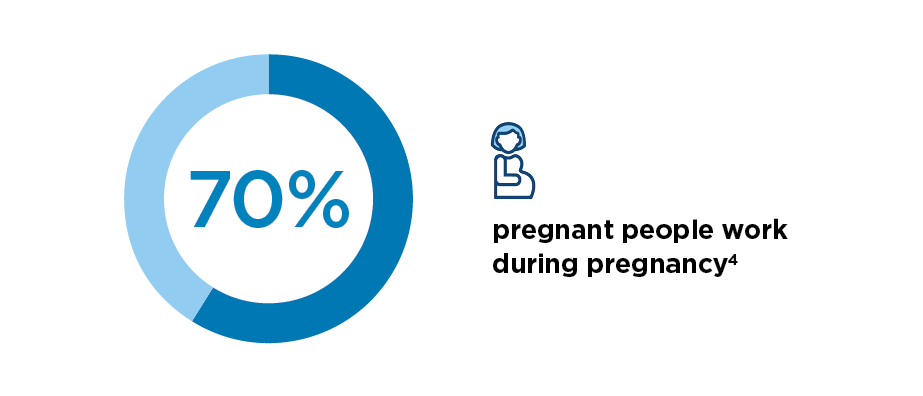
Health care services for new parents and children — from labor and delivery to childhood immunizations — account for $1 out of every $5 that large employers spend on health care.1 And with most pregnant people working until late in a pregnancy and returning soon after giving birth, much of their prenatal and postpartum time is spent in the workplace.
- 70% of pregnant people work during pregnancy.2
- The average new mother returns to work less than 3 months after giving birth.3
High-quality maternity care not only keeps your employees at their best — it helps you get the most out of your health care investment.







